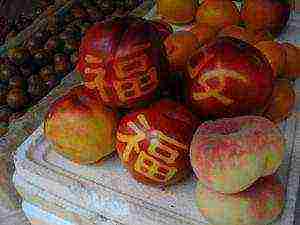Content
h1Technologies of growing chanterelles at home for beginners "/>
These mushrooms have a high taste and are very beautiful. Their bright yellow "cockerels" are visible from afar, even an inexperienced lover of quiet hunting can find them in the forest. Avid mushroom pickers who want to get more crops are trying to master the cultivation of chanterelles at home.
People have already figured out the cultivation of oyster mushrooms, champignons, shiitake and other mushrooms. But chanterelles cannot be grown in artificially organized conditions. Plants of the mycorrhizal family, to which chanterelles belong, can exist only in close contact with tree roots. They participate in symbiosis - they receive nutrients from the roots, supplying them with moisture.
You can have a mycelium with brightly colored cockerels in your outdoor area. But these fruits cannot be grown in a greenhouse, basement or cellar. Best of all, "cockerels" feel under pine, oak, spruce, fir and beech. The presence of these trees on the site is the main condition for the cultivation of chanterelles.
Planting material
To grow chanterelle mushrooms, like any other, you need mycelium. You can purchase it in specialized stores, or you can get it yourself.
There are several options for "contaminating" the soil with chanterelle spores:
- The first way is to collect ripe mushrooms in the forest. Soak the hats in a bucket of sweetened water for 10-20 hours. Add sugar to the solution, at the rate of 100 grams per 1 liter of water. After the specified time, the chanterelles must be kneaded with hands in water. Strain the resulting liquid. Do not pour out the solution, it will be needed, as well as the remaining gruel.
- On the site, choose a tree of the same species near which you collected chanterelles. Remove the top layer of earth around it. Disinfect the place under the mycelium with tincture of oak bark. Pour the spore water around the tree. Spread the mushroom porridge on top. Cover with earth. Next, you need to ensure that the place is constantly moderately humid.
- Even dried chanterelles are suitable for obtaining planting material. They should also be soaked for several hours. It is better to use rainwater for these purposes.
You will collect the first crop of chanterelles only in a year. For the winter, the place for mushrooms should be covered with dry branches or hay. - The second way is to harvest mycelium. In the fall, find a place in the forest where chanterelles grow. Even if the mycelium is not bearing fruit at the moment, the seedlings will be suitable. It is necessary to dig a small area with a shovel. Choose a tree that you have in your yard. In the ground, you will see thin white threads, this is the mycelium of chanterelles. It must be kept until spring. To do this, place the soil with mycelium in bags and put it in a cool place, for example, a cellar. Do not close the bags tightly, you need a constant supply of air.
The temperature must not be allowed to drop by more than -2 ° C. In such conditions, the planting material overwinters well, and harmful organisms that could get into the soil from the forest will die. The earth can practically dry out during this time, but the mycelium will be in good condition. When it gets warm, in the spring, lay out the soil with mushroom threads around a certain tree, having previously cleared and disinfected the soil with a decoction of oak bark. Monitor the moisture content of the mycelium and in a year you will see the desired, bright yellow fruits.
Unfortunately, there is no such thing as an intensive breeding method. Growing chanterelles in a greenhouse is impossible, she needs tree roots and natural temperature.
How to breed chanterelles from laboratory mycelium?

If you find the method of self-harvesting mycelium questionable, you can buy it. Today, chanterelle mycelium is available in specialized stores, and you can buy it on the Internet. Just be interested in the seller's reputation so as not to get caught on a low-quality product. The package must be accompanied by instructions that indicate how much mycelium must be applied per square meter of soil.
Growing chanterelles at home requires compliance with the following technology:
- Land must be brought from the forest.
- Choose a tree of an identical species - on the site and in the forest.
- The prepared laboratory mycelium is added to the prepared pits.
- Cover with earth, watered abundantly.
Further care for the mycelium is identical to the first two methods. It is enough to monitor the humidity and provide protection from frost in the cold season, covered with hay, straw or dry branches.
So chanterelle mushrooms are grown at home if there are trees of suitable species in the summer cottage. If there are none, do not be discouraged, you can think of something.
How to breed chanterelles if there are no necessary trees in the yard?

The answer to this question suggests itself. Trees need to be planted! And together with the chanterelles. This is done in the following way. A young oak, pine or alder is found in the forest, around which a family of chanterelles has already "settled". The tree is dug up so as to capture the soil with the mushrooms. The seedling is planted on the site, the moisture of the soil is monitored. In a year or two, you will be able to harvest chanterelles near your own home.
Despite the objective difficulties, growing chanterelles at home is quite possible. But today no one recommends doing this professionally, it is impossible to build a business on chanterelles, due to their dependence on their natural habitat.
Absolutely unusual, yellow-orange chanterelle mushrooms, arouse interest with their positive species and rich taste among gourmets and mushroom growers.
More and more people who are fond of cultivating crops are interested in how to grow chanterelles at home, on their plot or dacha, and whether artificial cultivation of these mushrooms is possible. Due to the structural features of the chanterelle mycelium, breeding them outside of natural conditions is a complex process that requires a lot of effort and attention.
About chanterelle mushrooms
Chanterelle mushroom (Cantharellus) belongs to the mycorrhizal family. This means that its mycelium can only exist in the vicinity of the roots of certain trees. Thin filaments (hyphae) of the mycelium, which are the "body" of the mycelium, are connected to tree roots. This union is by no means parasitic.
The mushroom gives the tree some of the nutrients, and from the roots it receives moisture and some of the elements it needs. This interaction is called symbiosis. Plants do not destroy, but complement each other. The existence of the chanterelle mycelium is impossible without the root system.
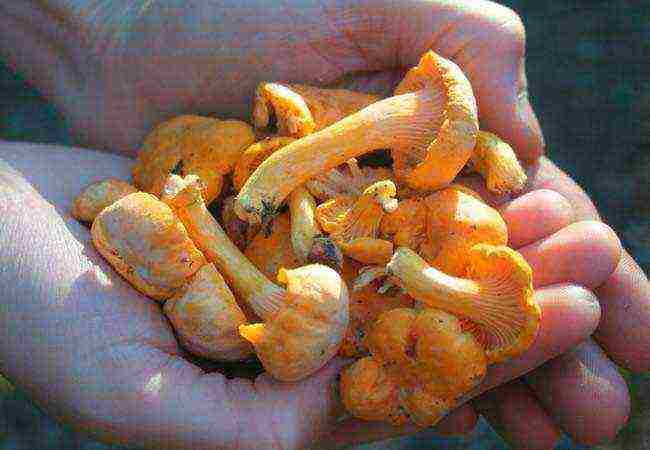 Chanterelles at home
Chanterelles at home
Externally, chanterelle mushrooms have a bright dark yellow or orange cap of a depressed appearance with carved edges, similar to the combs of a rooster. Among the people, the chanterelle is sometimes called "cockerel" precisely because of the structure of the hat. The diameter of the mushroom hat can reach 8-10 cm, the leg length is 5-7 cm. The leg forms a single whole with the mushroom head and does not have significant differences in color.
Best of all, chanterelles take root with pines, but they can coexist with oak, spruce, beech, fir. The chanterelle can grow in soils that are not particularly rich in nutrients and moisture, because it still takes the lack of elements from the roots.
To date, biologists have not been able to fully cultivate the chanterelle.The mushroom cannot be grown in completely artificial conditions, isolated from nature. Breeding of these myceliums can only be carried out on land plots on which suitable trees grow. No substrate, stumps, bars can become a breeding ground for a plant. "Cockerel" needs a symbiosis with living roots.
How to grow chanterelles at home
You can only grow chanterelles at home if the trees listed above grow on your site. At the same time, keep in mind that if the seed is taken from the mycelium under the spruce, then it must be planted under the spruce. The same applies to the rest of the trees and myceliums, otherwise the chanterelle will not take root. Seedlings can be made from the fruiting bodies of the fungus or take mycelium.
 How to grow chanterelles at home
How to grow chanterelles at home
How to make seedlings from spores
Collect some mature, large chanterelles in the forest. Rinse the hats, mash them into gruel and soak them in clean, preferably rainwater, for a day. The water should be sweetened, at the rate of 100 grams. sugar per 10 liters.
After a day, strain the water through cheesecloth or a fine sieve. It will be useful to water the land where the mushroom is planned to be planted with this water. The pulp that remains in the gauze (sieve) will serve as a seed for you.
How to plant
Chanterelles are best planted in spring or early summer when the weather is warm.
- Moisten the soil under the tree a few days before planting.
- On the day of planting, prepare 1 liter of saturated oak bark infusion. It is needed to disinfect the soil.
- Dig a small hole under the tree trunk, 50-60 cm in diameter and 20-30 cm deep.
- Pour oak bark over the hole and wait for the liquid to absorb. After about half an hour, put the seed from the mushroom gruel on the bottom of the depression, evenly distributing it throughout the pit.
- Dig in a hole, slightly moisten the top of the soil.
Further, make sure that the soil in this place does not dry out. It should be kept hydrated, but not flooded with water. Humidity should be kept within 40%. For the winter, the mycelium should be covered with hay, moss or dry branches. The harvest can be expected next year.
Planting chanterelles from mycelium
Harvesting mycelium is best done in the fall. To get seedlings from the mycelium, find the chanterelle mycelium in the forest and dig a small area of soil under the tree. You will see that the earth is riddled with subtle hyphae. It is not necessary that the mycelium bears fruit at this moment.
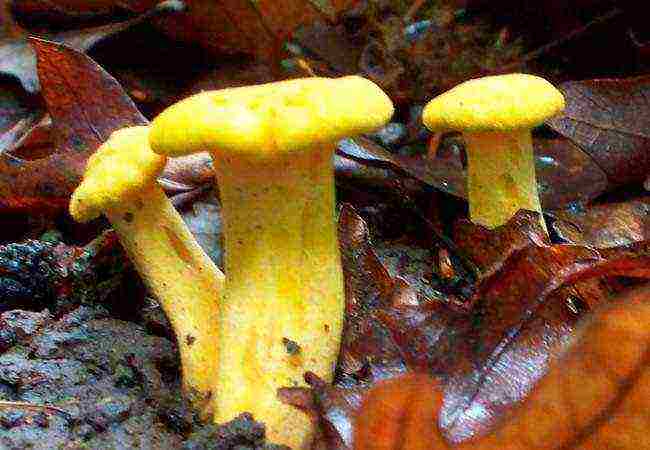 Planting chanterelles from mycelium
Planting chanterelles from mycelium
The mycelium must be kept until spring. It can be placed in bags and kept in a barn, basement, or any other cool non-residential area. The bags cannot be tied tightly, the mycelium must receive oxygen. Don't worry, the hyphae won't die even if the soil dries well. The mycelium can be vital for a year. Exposure is needed to destroy all harmful microorganisms that are in the soil. But mycelium must not be allowed to freeze, the best storage temperature is + 8-2 degrees.
In the spring, prepare the soil in your area in the same way as described above. Lay the soil with mycelium neatly in the dug holes. Cover it with soil, moisturize and care for, maintaining the necessary moisture level. Do not forget that you need to plant mycelium under the same tree species from under which it was taken. With a favorable outcome, the harvest will be in a year.
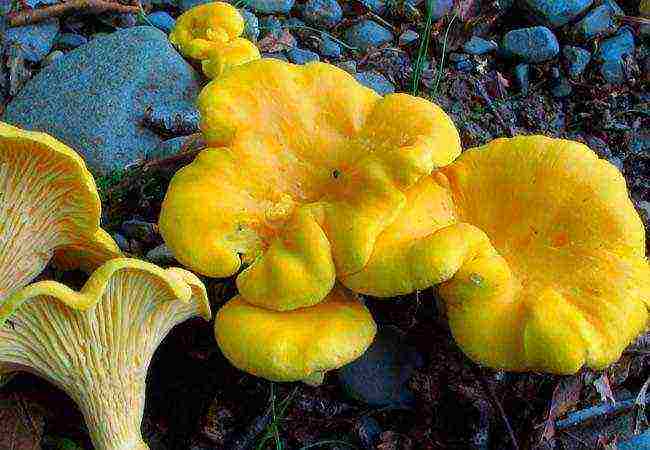 How to grow chanterelles at home
How to grow chanterelles at home
The technology of how to grow chanterelles at home is not so difficult. The point is that it takes a lot of patience to see the first harvest. But he may not ascend, due to the special nature of the chanterelles. These mushrooms have not yet been able to "tame" completely and control the process of their fruiting. Therefore, until now, no one takes up the cultivation of these mushrooms as a business. Growing chanterelles today can only remain an interesting hobby for summer residents and farmers.
This beautiful and tasty mushroom, which is never wormy, is adored by mushroom pickers and gourmets. It's always nice to see the bright red chanterelle hat peeking out of the moss. Chanterelles are dried and pickled, harvested fried and salted. They prepare soups and pies, add to porridge and stuff pancakes with them. But there is no dish tastier than fried chanterelles with potatoes and onions. Scrambled eggs with chanterelles are also a recognized delicacy.
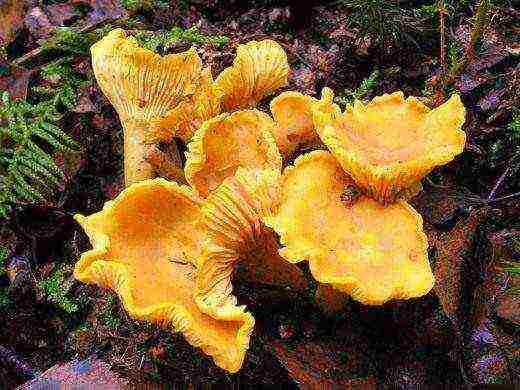 Common chanterelle
Common chanterelle
About the benefits of chanterelles
Chanterelle is rich in vitamins, minerals and amino acids. The bright red carrot color is due to the high content of useful carotene. The mushroom is used in the prevention of various diseases, in the treatment of liver, hepatitis C, eye ailments. Chanterelle helps fight inflammatory processes, inhibits the growth of many pathogens, and improves immunity. A couple of decades ago, it was an ordinary mushroom, widespread in our forests. Today, near large cities, the chanterelle has become a rarity, like other valuable mushrooms, by the way.
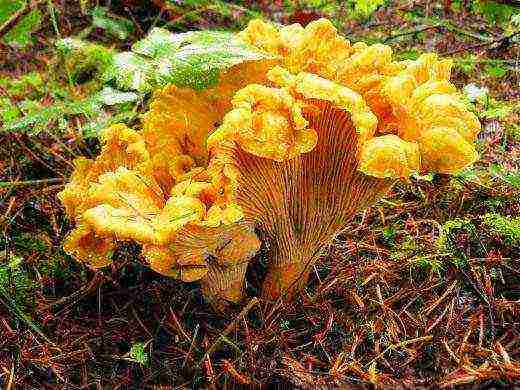
How to grow a chanterelle on the site?
Champignons and oyster mushrooms grown in large mushroom farms have long been familiar. Forest mushrooms are still not so often found in industrial production, but skilled amateur mushroom growers successfully grow noble tubular mushrooms on their plots: boletus, boletus, boletus. The chanterelle, whose genus numbers up to sixty species, is an infrequent visitor to the gardens, but if you create the necessary conditions for it, it is possible to get a good harvest from your plot.
 Cinnabar red chanterelle,
Cinnabar red chanterelle,
The mycelium of the chanterelle forms mycorrhiza - the mycelium of the fungus grows into the root system of the tree. Mycorrhiza is a symbiotic formation, the plant supplies the fungus with nutrients, the mycorrhiza supplies minerals to the roots of the partner, improves the supply of moisture. The best partners of the chanterelle are pine and spruce, the mushroom can cooperate with oak, beech and some other types of trees. Attempts to "make friends" the forest mushroom with garden trees are doomed to failure.
So, we know the main condition, without which it is impossible to grow a chanterelle: the mushroom plantation should be located under the partner tree. If there is none, you will have to plant. It is better to choose a young tree in the mushroom forest, immediately with the mycelium. The mycelium is located at a distance of 15-20 cm from the surface, it is advisable not to destroy the fungus root. It is necessary to grab together with the tree a couple of bags of the upper layer of forest soil and coniferous litter. It is better to plant a forest tree with a mushroom root in a semi-shady place on the site. When planting, the mycelium should be in the forest soil, covered with needles on top. The mycelium does not tolerate both drying out and waterlogging, so moderate watering will have to be carried out regularly. There is no need to fertilize the soil: the chanterelle will receive nutrients from the partner's roots.
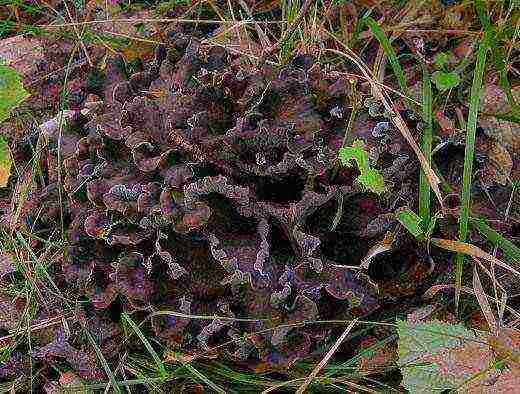 Chanterelle gray
Chanterelle gray
If a pine, spruce, or other forest tree already grows on the site, chanterelles can be planted to it. Moreover, the spruce can be blue, and the mountain pine, the yield does not depend on the variety and subspecies of the tree. There are two methods: planting mycelium and sowing spores.
When sowing, choose the caps of old, overripe from a gastronomic point of view, mushrooms. Some amateur mushroom growers advise simply scattering the caps under the tree, others recommend soaking them in water, and after a day, having mixed well, pour the planting site with the solution. The main condition is to further maintain a constant humidity level: drying out or waterlogging will destroy the planting material.
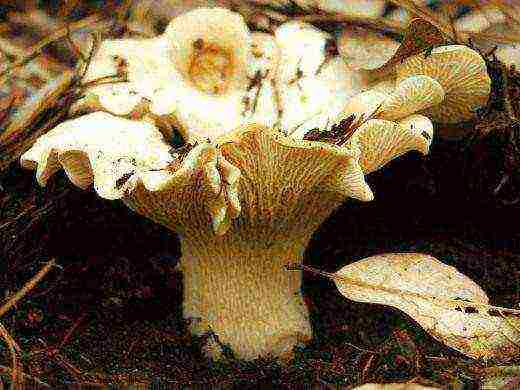 Chanterelle white
Chanterelle white
A more reliable and faster way is to plant mycelium dug out in the forest. Pits are dug under the symbiont tree, the depth is about 20 centimeters, the size in the plan is not important, but usually it is 15x15 cm.The mycelium is placed there together with the forest soil, covered with moss, coniferous or leaf litter on top. The watering regime is the same as for spore planting. Planting times are from June to September.There is one subtlety: the mycelium must be prepared under a tree of the same species, which will serve as a symbiotic partner.
Subject to the above conditions, especially the humidity regime, by the beginning of June next year it will be possible to taste chanterelles from your own garden.
Growing mushrooms in the countryside or in your garden is simple and profitable. Having created with his own hands a suitable soil for the growth of the mushroom, the farmer will be able to sell and eat honey mushrooms, porcini mushrooms, chanterelles, shiitake and oyster mushrooms at a high price, without significant financial costs.
The content of the article:
- Growing champignons
- Growing honey agarics at home
- Growing oyster mushrooms at home
- Cultivation of porcini mushrooms in a personal plot
- Growing chanterelles at home
- Growing shiitake mushrooms at home
- And in conclusion
Growing champignons
Today, mushroom cultivation has become a fairly profitable and widespread agricultural activity. Growing champignons at home is certainly not an easy task, but it fully justifies itself when making real profits and fresh homemade products. Growing mushrooms, especially those that are popular for food, can be a real business for you if you pay enough attention to growing and caring for them. In the warm season, as well as in latitudes with a mild climate, mushrooms can be grown annually both in the open field and in greenhouse conditions.
All mushrooms are quite capricious about light and temperature. Therefore, the optimal growing conditions will be a temperature not lower than +12 degrees. With high humidity of about 80% and complete shade. A huge advantage of mushrooms such as champignons and oyster mushrooms is that they can be grown in a multi-tiered way, thereby saving space, the basement can be an ideal place.
For mushrooms, it is necessary to prepare a special nutrient mixture from the soil. A mixture of manure, straw, or sawdust is fine. This mixture is prepared about a few weeks before the mycelium is added to the substrate. The growth and productivity of mushrooms will directly depend on the quality of the soil. At enterprises growing mushrooms on an industrial scale, about 200 kilograms of straw or finely chopped sawdust are taken for half a ton of manure. To improve the soil and saturation, it is enriched with ammonium sulfate, and the substrate is stored in a cool dark place, avoiding direct sunlight on the mixture. The prepared mixture must be mixed every week, with the addition of 20 kilograms of gypsum once and stirring well.
After three to four weeks, the mushroom growing mix will be ready.

It will be very convenient to place wooden flooring or pallets in a basement or greenhouse, you can pour the soil directly onto the prepared surface, not forgetting to water the substrate from time to time.
If you are new to growing mushrooms, then the material in the form of myceliums is best purchased in a specialized store. Spore myceliums are sold in special containers, they are dung and grain. The dung mycelium is divided into equal pieces and placed in the substrate to a depth of about 5 centimeters; it is better to place them in a checkerboard pattern so that the distance between the seedlings does not exceed half a meter. In order to save space. Grain mushrooms are sown in a slightly different way, grains are laid out on a layer of substrate, and then covered with a layer of soil about 5 centimeters. The optimum temperature for the development and growth of myceliums is considered to be +25 degrees, then after ten days, the temperature should be reduced to 20 degrees, and the surface of the substrate should be covered with an even layer of soil of 3 centimeters. After a week, the temperature is lowered to +16 degrees, in a month you can wait for the first mushrooms.
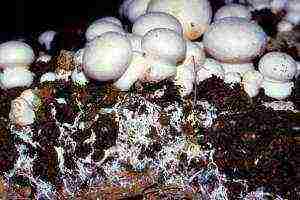
Growing honey agarics at home
An equally important mushroom variety, which is grown by mushroom pickers at home, is considered to be honey mushroom. Its unpretentiousness and simple care for mycelium makes honey mushrooms very popular mushrooms. The most common way to grow honey agaric is to breed it in wooden tubs. This cultivation method is common because it can be used both on a personal plot and on specially prepared forest lands. The main advantage in growing honey mushrooms is their low financial cost, as well as the ease of reproduction of myceliums. Cultivation of honey agarics in wooden tubs is carried out mainly by amateur mushroom pickers.

Practically any varieties of honey agarics are suitable for breeding honey mushrooms at home. Wooden decks, tubs, troughs made of deciduous wood can serve as a landing place. But conifers are not used in mushroom cultivation, as they can cause bitterness of the grown product, due to the high resin content. Growing honey mushrooms is a fairly simple procedure, and differs little from the cultivation of other myceliums. The very procedure for cultivating honey agaric consists in infecting a wood platform with mycelium or planting raw materials. It is necessary to make cuts in the thickness of wooden containers for planting or drill holes, and then fill the grooves with mycelium or planting material. After the procedure of filling with mycelium, the holes are covered with a prepared substrate. The most simplified option for growing honey agaric is filling the rotten stump with mycelium, by infecting the bark and cracks, and then sprinkling with rotted manure mixed with straw in proportions 1: 1.
Monitor the quality of your planting material, since it is difficult to acquire high-quality mycelium or mycelium. For home growing honey mushrooms, grain mycelium, which is purchased in specialized stores, is perfect. Pieces of spore-infested wood are also a fairly common option. Infected wood can be found in the forest itself and recognized by a white bloom, as well as a specific mushroom smell. Such myceliums are carefully removed with a knife or file, divided into pieces, and introduced into the prepared slots in the prepared stumps. Before removing forest mycelium, make sure the mushrooms are edible.

After the performed procedure with the introduction of mycelium, for the accelerated development of the mycelium, the mushroom plantation can be isolated with cellophane, and with proper care, the honey agaric harvest can be obtained by autumn. Climatic and other factors (such as mycelium quality, moisture and wood) directly affect the growth rate and development of honey agaric. The mushroom harvest will not immediately please you with its abundance. When growing mushrooms on your site, take into account the fact that myceliums and fungal spores can adversely affect the roots of trees, as well as wooden structures. Therefore, exclude the possibility of contamination of fruit trees with fungal spores. After the mycelium has been introduced into the soil, the fruiting of the mycelium will last about 6 years. Mushroom plantations are quite aggressive, so it is better to fence them off with grooves filled with sand so as not to harm the garden plants.
With the development of the popularity of mushroom farms, mushroom sticks began to be widely used. Special wooden sticks infected with fungal spores. The simplicity of working with such raw materials is good news, the sticks are simply inserted into the bark or holes, and then covered with wet sawdust or small straw. This method of growing mushrooms is suitable for a garden plot, but in industrial enterprises, only grain mycelium is used for growing mushrooms.
Growing oyster mushrooms at home
Another common mushroom with excellent taste is the oyster mushroom.There are quite a few ways to grow oyster mushrooms. This article will describe a method that is suitable for both hobbyists who grow mushrooms in small batches and for large-scale production. In the wild, oyster mushrooms grow on stumps and deciduous trees. The optimal temperature for the development of mycelium is +25 degrees. Then, at a temperature of + 14-16 degrees, fruiting begins, for up to 5 weeks. The sizes of oyster mushrooms range from 5 centimeters to 30, the color of the mushroom is gray, with a brown tint. Oyster mushroom is a rather aromatic mushroom with good taste. These mushrooms are also suitable for pickling and pickling, as well as frying and cooking soups.
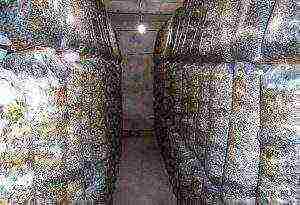
So, the substrate for growing oyster mushrooms must be prepared in advance. A mixture of sawdust, small straw and sunflower husks will serve for him. The substrate must be clean, without the presence of foreign objects, it is better to boil the sawdust before preparing the soil to destroy the harmful microflora. After the substrate is dried on a film, spread out in a thin layer.
Temperature and humidity are important for growing mushrooms, so the room should be equipped with everything you need, clean and well ventilated. Oyster mushroom grows well in basements equipped with heating appliances, hoods and lighting.
You can start planting mycelium after all the necessary conditions are met for growing mushrooms, namely after preparing the substrate and premises. Oyster mushroom mycelium can be purchased at specialized factories and farms, as well as in gardening stores. You can start sowing after the substrate has been placed at the bottom of ordinary plastic bags or bags, then on a layer of 8 centimeters, the mycelium is laid out in 3 centimeters, broken into pieces, and covered with substrate on top and so on alternately to the top. The bag is tied, the contents are compacted, then incisions are made on the bag at a distance of 2-3 centimeters, for further growth of mushrooms and the removal of excess moisture.
The bags filled with mycelium are placed vertically, about half a meter apart, to allow the oyster mushrooms to grow. It will be easier if the bags are formed in such a way that the location of your mushroom "bed" does not bring you any inconvenience later. You must move freely between bags for ease of watering and harvesting. You can arrange the bags in tiers if the room is high enough, which will increase the cultivation area. The optimal room temperature is 19-25 degrees, when the mycelium begins to develop, the contents of the bags will turn white, as the spores will penetrate deeper into the substrate. Watering bags with mycelium is done once a day. If you follow all the requirements for the cultivation of myceliums, then after three weeks, your mushroom garden will delight you with the first fruits.

In order for the fruiting of mushrooms to develop actively, some mushroom gardeners resort to tricks. To do this, the substrate sprouted with mycelium is stimulated with a low temperature from +3 to +6 degrees, this temperature is maintained for about two or three days, then you need to leave the substrate in bags, making wide enough holes there, or remove the substrate and leave it without bags and do not water for a week. After a week of lack of moisture, the substrate is watered abundantly, with water at room temperature, and then once a day, air the room, with myceliums, the air temperature in the room should be +15 degrees.
For the first week, your myceliums do not need lighting, but then it is necessary to organize sufficient bright artificial lighting over the bags with mycelium. After the mycelium begins to bear fruit, a new crop of mushrooms can be obtained every three weeks, however, over time, productivity will decrease, which will serve as a signal to replace the substrate and introduce a new batch of mycelium, that is, to resume the cycle. For every 100 kilograms of substrate, experienced mushroom pickers get about 50 kilograms of fresh mushrooms. It is very important, before starting a new fruiting cycle of myceliums, the room should be disinfected in order to get rid of the pathogenic environment of the predecessors.The approximate number of cycles per year will be 4-7, depending on the care and growing conditions.
Cultivation of porcini mushrooms in a personal plot
Cultivation of porcini mushrooms, in personal plots, the procedure is not painstaking and quite simple. Therefore, it is becoming increasingly popular. If you do not want to spend money on the purchase of mycelium, then you can do without it, you just need to find the mycelium and the place where the porcini mushrooms grow. You can collect mature mushrooms and prepare a mixture with white mushroom spores with your own hands. For this, mature porcini mushrooms are crushed and poured with clean water, left in a dark place for a day. Thus, you get a solution containing numerous white fungus spores. Next, you need to act according to the scheme, choose a place that is darkened, it is better under deciduous trees and organize something like a garden bed. To do this, we fertilize the ground with rotted manure, mixed with chopped straw or sawdust, mix everything thoroughly with the soil, level and water the prepared soil with the prepared mixture. It should be borne in mind that porcini mushrooms enter symbiosis only with deciduous trees, and do not like the scorching sun.
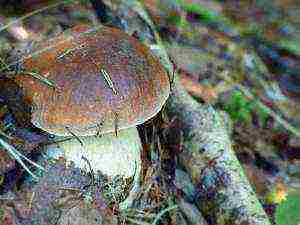
Another way to grow porcini mushrooms is to remove the mycelium from the old place and move it to your personal plot. The main thing is to properly organize the place for planting mycelium. Pay attention to the trees under which the mycelium grew in the forest or glade, to the structure of the soil, this will help to establish fruiting in the future on your site. So, after removing the mycelium, collect enough soil from this place so that it would be enough to add it to the soil on the site after the mycelium was laid. We loosen the earth, fertilize it with manure, pour out the brought soil, loosen it again. Then we make depressions in the prepared soil and lay out the pieces of mycelium, sprinkling on top with a mixture of sawdust, straw, sunflower husks or forest soil, then slightly moisten. The mushrooms should not be filled with water, and the soil should not be allowed to dry out, that is, the place where the porcini mushrooms grow must be constantly moistened.

Mature parts of porcini mushrooms can also be used as seeds. Porcini mushrooms must be crushed, loosened the soil, fertilized with compost and chopped hardwood sawdust. Planting is done, as in the previous version, only the chopped mushroom is introduced. Then the soil is moistened and sprinkled with chopped straw on top. Both fresh mushrooms and slightly dried mushrooms are suitable, such mushrooms are laid out in a dense layer on the prepared soil and watered every day, after the soil is infected with spores, the mushrooms can be removed. With proper selection of the site for planting porcini mushrooms and adherence to fertilization and planting technologies, the harvest will appear next year. Reproduction will take place incrementally, from several mushrooms to whole mushroom families, and in another year from your mushroom plantation you can get about two kilograms of porcini mushrooms.
These methods of cultivation and cultivation of porcini mushroom are suitable only for amateur mushroom growers. The described cultivation methods are widely used in the area where the necessary mushrooms grow in sufficient quantities. Industrial production of porcini mushroom is established to a greater extent in Poland. But our domestic producer does not stand aside, increasing the volume of mushroom production.
Unfortunately, in our time, mushroom growing technologies lag behind world producers, although earlier in Russia mushrooms were grown on an industrial scale. Today mushroom cultivation is rather an amateur activity, undoubtedly profitable. The price coefficient on supermarket shelves is quite high, but mushroom cultivation on an industrial scale is not yet practiced at the proper level in our country, preferring to import foreign mushrooms.
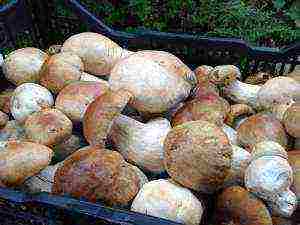
If you want to grow porcini mushrooms, it is worth considering the fact that their mycelium differs from other varieties in that it grows together with the roots of trees, forming a kind of symbiotic relationship, and without it, the development of mycelium is not possible. Therefore, the cultivation of porcini mushrooms should take place near the trees growing on your site.Better yet, organize your mushroom farm in the adjacent forest belt.
Growing chanterelles at home
Cultivation of chanterelles, like other mushrooms, is based on the basic rules of mushroom cultivation. Planting a mushroom next to a tree is carried out with the help of a spore infusion, pieces of mycelium or seed material, with the assistance of a layer of forest soil. The composition of the forest soil is saturated and nutritious, and the upper humus layer is responsible for the development of the mycelium. The bulk of the soil is rich in trace elements and organic compounds, it also contains spores of fungi, from which fruits then grow. Therefore, when growing chanterelles on your site and preparing mycelium for planting, choose a place where their main population is concentrated, cut off the mushrooms, and carefully remove the mycelium and transfer it to your site together with the soil.
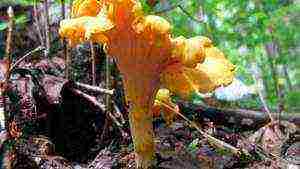
The removal of forest soil should be carried out near trees; the beginning of autumn, or early spring is considered the optimal harvesting time. Layers of soil are dug, at least 20 centimeters thick. At the site for contamination of the soil with chanterelles, the lower layer of forest soil is used. The organization of a mini-mushroom farm should take place in a cool, shaded place, among the trees. We bury the mycelium in the ground and sprinkle with chopped straw. Maintain the required humidity.
If you previously noticed a place where there are a lot of chanterelles, take note of this place. However, the absence of mushrooms cannot guarantee that the mycelium is dead, it is just possible that the season was less fruitful, the main criterion should be that the mushrooms were seen earlier in this place. Spores of fungi in the soil layer remain for a long time and they are not afraid of bad weather and oppression of fruiting. They continue their existence remarkably, using a minimum of nutrients, taking advantage of their protection.
In order for the forest soil to serve as a good soil for a future mushroom farm, it must go through a certain stage of preliminary preparation. This preparation method will improve the quality of forest soil. To properly prepare the forest soil, it is packed in plastic bags and dried in a cold room, the main thing is to leave oxygen to the soil. The soil can be stored in such conditions for up to a year, and without harming the spores of fungi, but pathogenic microorganisms will die without moisture. As a result of this kind of training, mushroom spores will become accustomed to drought conditions and become more resilient.
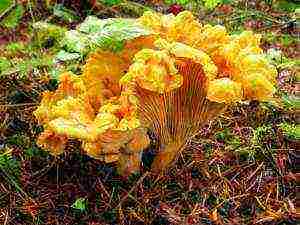
It is better to plant chanterelles on the site in early spring, high humidity and warm weather will contribute to better implantation of the mycelium into the ground and its further development. The previously harvested forest soil must be mixed with garden soil in a 1: 1 ratio, pour the mixture from the soil into the prepared grooves, add mycelium or a prepared solution of chanterelles there, and cover it with fine straw or matted foliage on top to protect the mushroom bed from drying out. Watering must be organized in such a way as not to harm the mycelium, it is better to water in small portions slightly moistening the soil, because water stagnation should not be allowed. The mycelium can simply die from an excess of moisture, as a result of decay.
Chanterelle, has not yet received its distribution, although it has an excellent taste and contains quite a few useful substances. Only a few mushroom growers grow chanterelles in their plots. However, it is quite possible that soon chanterelles will establish themselves and the industrial production of mushrooms will turn its gaze on these mushrooms. And we can all be content with tasty and healthy mushrooms that can heal even gastrointestinal diseases.
Growing shiitake mushrooms at home
Unpretentious, easy to grow and very useful shiitake mushroom, is very popular in foreign countries.Foreign industrial companies grow this mushroom in huge quantities. And for good reason. In terms of useful properties, the mushroom is not inferior to its relatives, it strengthens the nervous system, has a tonic effect. It contains the optimal amount of amino acids for humans.

Shiitake mushrooms are traditionally grown on tree hemp and logs. In the countries of the rising sun, this mushroom is very popular. In our country, the shiitake mushroom is grown on sawdust of deciduous trees. The largest yields can be obtained if these mushrooms are grown on an enriched specially prepared substrate, which is formed into blocks and becomes infected with myceliums.
The main constituent of the substrate for cultivating shiitake is beech, birch, oak, ash sawdust, enriched with special fertilizers. Coniferous sawdust is not suitable for cultivation. The content of esters and resin substances in them will have a disinfecting effect, and only hinder the development of mycelium. The size of the sawdust also plays an important role in mushroom cultivation. Since too small ones will get lost in a lump, and disrupt aeration, slowing down the growth of mycelium. Sawdust can be mixed with wood chips for better gas exchange. In order for the shiitake mushrooms to please you with the harvest, the soil must be sterilized before settling the mycelium. The fact is that the shiitake mycelium, like all other mushrooms, develops more slowly than pathogenic microorganisms, which can harm the mycelium in the future and leave you without a mushroom harvest.
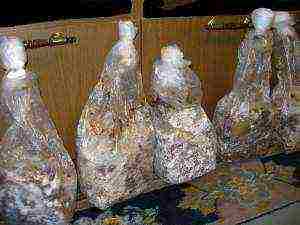
The substrate infected with mycelium should not be too wet and dense, a bacterial infection develops in such a soil. The substrate for industrial production of shiitake is stored in bags, then sterilized and used for its intended purpose. However, there are other methods of preparing the substrate with your own hands. It is not difficult to prepare the substrate, the sawdust is sterilized by heat treatment, cooled, dried, then sown with mycelium, and then packaged in plastic bags. Thus, the mycelium develops in a warm temperature, the mycelium grows for a month and a half, and after that the contents of the bags are taken out and mushroom beds are formed already in the basement or other room intended for growing mushrooms.
The entire process of packing and contamination of the soil with mycelium must be carried out in compliance with sanitary standards. Fruiting on open formed blocks lasts about six months.
The cultivation time for shiitake mushrooms in compliance with the thermal treatment of the soil, whether it be sawdust or other substrates intended for this purpose, has a shorter period than real street cultivation. This method of growing mushrooms is called intensive, harvesting, subject to all the requirements of this method, takes place year-round, in specially designated places indoors. To increase the development time of the mycelium, special fertilizers and enriching additives are introduced into the soil. Sources can be elements of organic origin and nitrogen-containing. You can freely purchase ready-made supplements for growing mycelium and increasing the fruiting of shiitake in specialized stores, or you can use compost or rotted manure. In order to increase the acidity level, as well as for the purpose of enrichment, in addition to organic matter, a dose of mineral fertilizers is also introduced into the substrate, in the form of crushed chalk, bone meal, gypsum or ready-made ones purchased in a store.
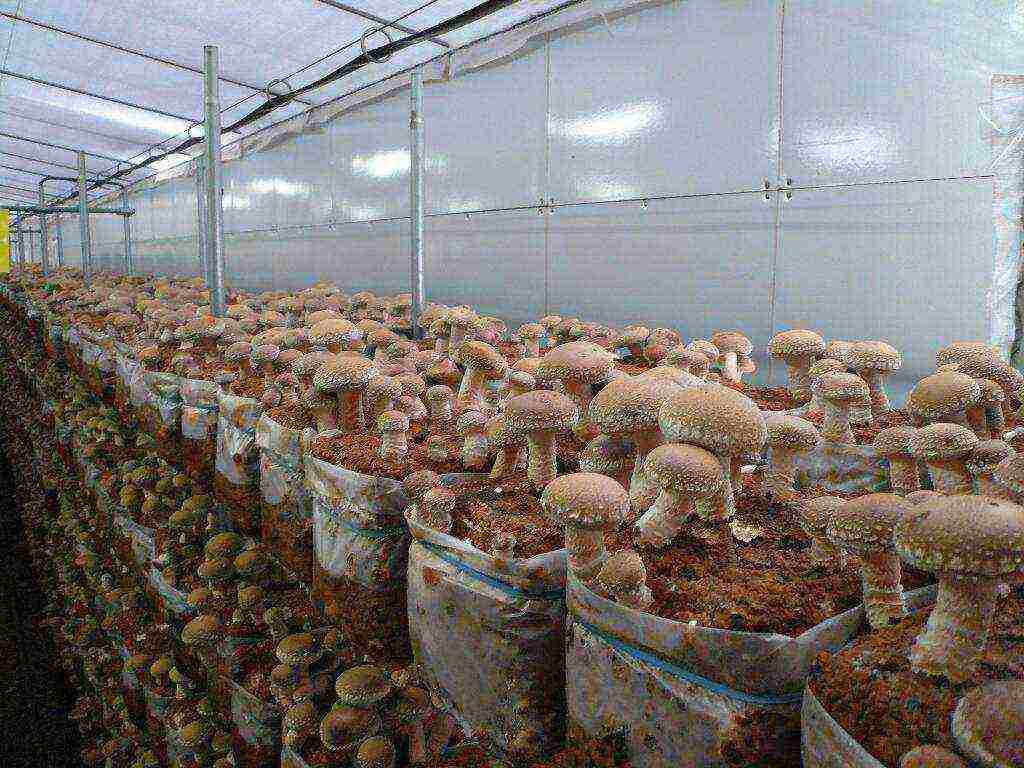
And in conclusion
Any varieties of mushrooms are suitable for home cultivation. With proper care and adherence to all the rules for growing mushrooms, even on your own garden plot, you can organize a fruit-bearing mushroom farm, which is inferior to an industrial one only in terms of production, but, undoubtedly, winning in terms of the safe characteristics of the product obtained.Growing mushrooms can also be an excellent business for your family, at a minimum cost, you will get maximum profit and provide yourself with the freshest mushrooms all year round.

